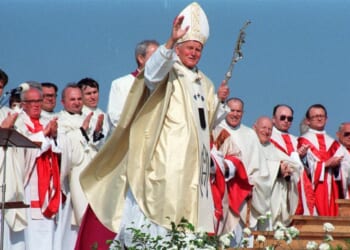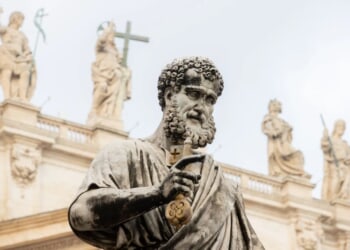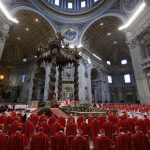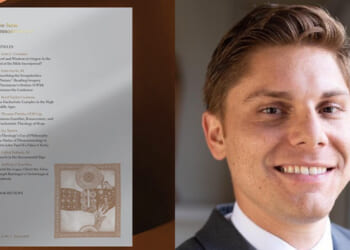“They were extremely proud. They became involved in the independence movements of their countries.”
Many military aviation history buffs are at least somewhat familiar with the story of the Tuskegee Airmen, the heroic and groundbreaking African-American fighter pilots of World War II who essentially fought a two-front war:
What’s not so well-known is that Great Britain’s Royal Air Force (RAF) also had its fair share of skin color barrier-busting combat aviators during WWII.
Background on the WWII RAF’s Black Aviators
As luck would have it, I stumbled upon a U.K. National Archives podcast dated June 11, 2014, titled “The untold story of the RAF’s black Second World War fliers over Europe,” whereupon I learned that over 500 black aircrewmen were recruited into the RAF from the British Crown’s Caribbean and West African colonies. They suffered a 30 percent loss rate (as well as a fair number of prisoners of war), yet unfortunately, their sacrifice was mostly lost to the historical record after they returned to their countries of origin once the war ended.
The presenter was Mark Johnson, a former soldier, drug enforcement officer, and corporate cybercrime investigator with a lifelong passion for history. Johnson spent over seventeen years researching the topic, drawing much inspiration from his own great-uncle, as a former navigator with Bomber Command’s No 102 (Ceylon) Squadron and a holder of the Distinguished Flying Cross.
As was the case with the U.S. Armed Forces, blacks were not allowed to serve as officers in the U.K. Armed Forces at the outset of the war. But, as the saying goes, “desperate times call for desperate measures,” and in October 1939, the color bar war lifted. As Johnson elaborated:
“The Navy and the Army did not move particularly quickly to allow officers of colour to join their ranks, but the Air Force moved very quickly and organised a recruiting drive. And as a result, most volunteers from the Caribbean entered the Air Force. The Air Force was actually … it’s actually a really, really important success story in terms of integration and acceptance, when in 1939 the Air Force opened its arms to volunteers from both Africa and the Caribbean.”
The Planes They Flew
Whilst the Tuskegee Airmen were all fighter jocks (to my knowledge, there were no African-Americans who served as bomber crew members during WWII; if any of our dear readers know otherwise, please let us know), the RAF’s Caribbean and West African aviators served not only as fighter pilots but also the full gamut of bomber crew positions, from navigators to flight engineers to aerial gunners. Roughly half of them ended up serving as gunners; one of them, Lincoln Lynch, DFM, a tailgunner from Jamaica, who served with 102 Squadron, shot down a Messerschmitt night fighter on his first operational flight.
As one might guess, the fighter pilots flew Supermarine Spitfires and Hawker Hurricanes, as well as the lesser-known Hawker Typhoon that proved extremely successful as a ground-attack aircraft subsequent to D-Day. Specific bombers mentioned by Johnson include the Vickers Wellington in addition to the more famous Avro Lancaster and Handley Page Halifax. And then there was the de Havilland Mosquito, which was used as a night fighter, fighter-bomber, and night fighter alike.
Caribbean Women Served Too
The RAF’s Caribbean volunteer force wasn’t all male, as roughly 100 Caribbean women also volunteered for service. Specific names mentioned by Johnson included Lillian Bader—the first black woman to serve in the British Regular Forces in a technical capacity—and Sonia Thompson from Kingston, Jamaica.
Their Postwar Legacy
Johnson is emphatic that these black aviators were not mere pawns or (for lack of a better term) sellouts:
“Why does a subject of an imperial power join that power’s army and fight when they’re not obliged to do so? Because they were volunteers, they were not conscripted. And when I interviewed survivors, including my great-uncle, they were very, very clear. This was not about King and country or any sort of brain-washing that they might have undergone … And they knew that if Hitler defeated England, I quote my uncle:
‘Many people don’t think about what would have happened in Jamaica if Hitler had defeated Britain, but we certainly would have returned to slavery’”
Later on in his presentation, Johnson circled back to the subject:
“Again, this misconception of these men as being puppets or dupes or brainwashed people who were subject to colonial education [is] so wrong, I think. They were extremely proud. They became involved in the independence movements of their countries. Many of them became leaders. Errol Barrow, former RAF officer, became the Prime Minister of Barbados, for example.”
Closing Thoughts and Additional Information
Johnson also recognized the first African-American military aviator to fly in combat, Eugene J. Bullard, who served with France’s Lafayette Flying Corps during World War I. He also spotlighted the first known black military flier from any nation, a half-Turkish, half-Nigerian aerial named Ahmet Ali Çelikten, who fought for the Ottoman Empire during WWI and retired from the modern, post-Ottoman Turkish Air Force in 1949 as a colonel.
Johnson wrapped up his speech thusly:
“And I give the last word to Johnny Banks, my uncle’s best friend, a former Mosquito navigator, shown here in 1995 at the Victory Over Japan Day celebrations: ‘I went to fight for freedom, for Jamaica and for all the little countries of the world that would otherwise be controlled by bullies’.”
To learn more about these nearly forgotten aviators, read Johnson’s book Caribbean Volunteers at War: The Forgotten Story of the RAF’s “Tuskegee Airmen” published by Pen and Sword Aviation.
About the Author: Christian D. Orr
Christian D. Orr was previously a Senior Defense Editor for National Security Journal (NSJ) and 19FortyFive. He is a former Air Force Security Forces officer, Federal law enforcement officer, and private military contractor (with assignments worked in Iraq, the United Arab Emirates, Kosovo, Japan, Germany, and the Pentagon). Chris holds a B.A. in International Relations from the University of Southern California (USC) and an M.A. in Intelligence Studies (concentration in Terrorism Studies) from American Military University (AMU). He has also been published in The Daily Torch, The Journal of Intelligence and Cyber Security, and Simple Flying. Last but not least, he is a Companion of the Order of the Naval Order of the United States (NOUS). If you’d like to pick his brain further, you can ofttimes find him at the Old Virginia Tobacco Company (OVTC) lounge in Manassas, Virginia, partaking of fine stogies and good quality human camaraderie.
Image: Steve Walker Photography / Shutterstock.com















